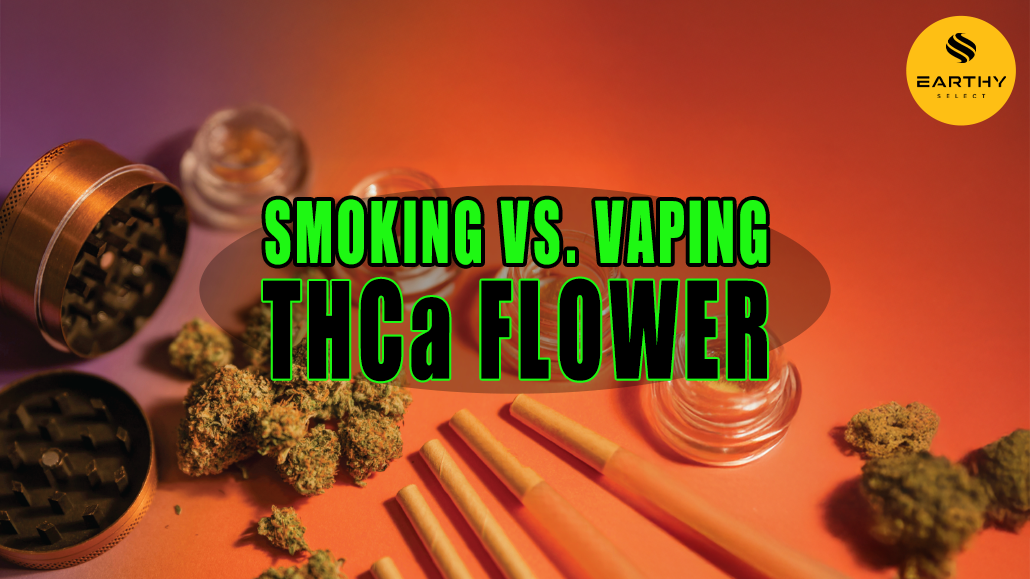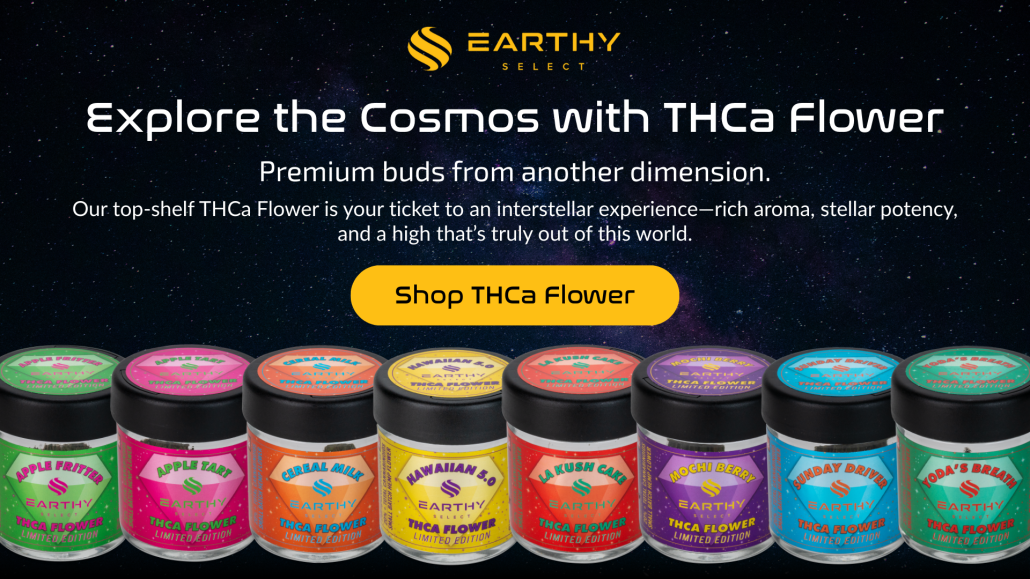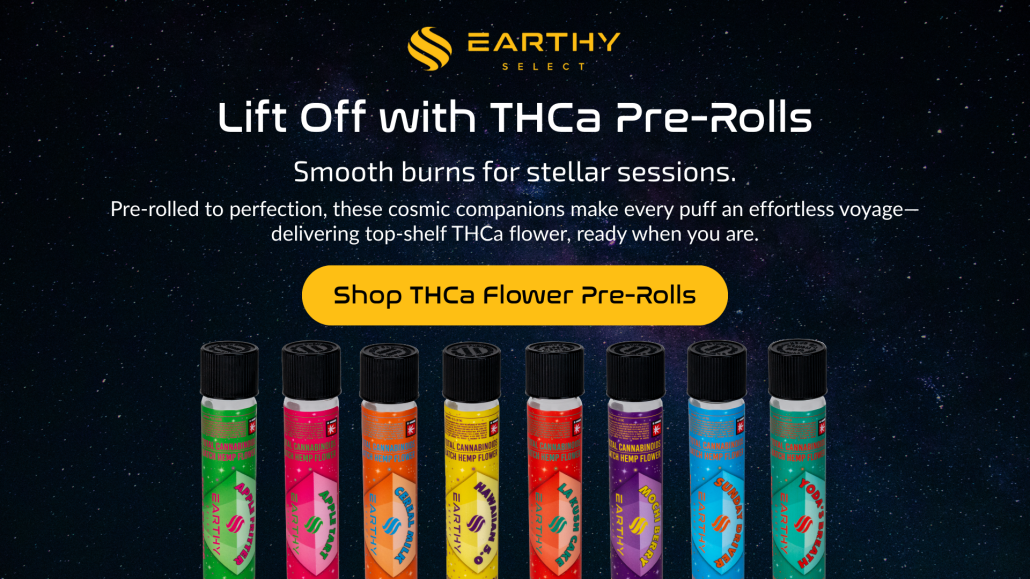THCa Flower Smoked vs. Vaped: What You Should Know
Key Takeaways:
- Smoking and vaping THCa flower may result in different experiences due to variations in bioavailability, terpene preservation, and the range of compounds inhaled.
- Vaping appears to offer greater control over temperature, which could help retain terpenes and cannabinoids more effectively than smoking, potentially leading to a smoother and more tailored experience.
- Choosing between smoking and vaping might depend on individual preferences, tolerance levels, and situational factors, while keeping safety and compliance in mind.
When considering THCa flower, the method of consumption—whether smoked or vaped—can influence the overall experience. Both approaches involve heating THCa to transform it into active THC, though the processes differ, potentially affecting factors like effects, flavor, and safety considerations.
For example, smoking involves combustion, which often leads to a rapid and strong onset but may produce ash and other byproducts. Vaping, by contrast, typically uses gentler heat, which could preserve more terpenes and cannabinoids while reducing harshness and certain unwanted compounds [1].
At Earthy Select, we prioritize purity and potency in our THCa Flower, with each batch tested in certified labs and cultivated with care. Whether you’re seeking pronounced effects or subtle flavors, understanding how smoking and vaping differ may help you select a method that aligns with your needs. Continue reading to explore how to achieve a safer and more personalized experience with our premium THCa Flower.
Smoked vs. Vaped: How THCa Flower Behaves
THCa flower requires heat to become psychoactive, converting into THC through a process known as decarboxylation. Smoking generally provides a swift and intense effect, as the direct flame activates THCa rapidly, though it might be harsher and could degrade some terpenes and cannabinoids. Vaping, on the other hand, often employs controlled heat, which may help preserve flavor and deliver a smoother experience with potentially greater efficiency [1].
For those prioritizing a robust flavor profile and a less intense inhalation, vaping might be worth considering. For a more traditional and immediate impact, smoking could be suitable. Ultimately, understanding the impact of your chosen method may assist in achieving your desired outcome.
THCa’s Activation into Delta-9 THC
THCa, a non-psychoactive compound in raw cannabis, transforms into psychoactive THC through decarboxylation when exposed to heat. Whether smoking or vaping, the application of heat facilitates this conversion to Delta-9 THC, which produces the characteristic “high.”
Vaping at moderate temperatures might activate THCa efficiently while retaining more flavor compared to the typically higher heat of smoking, which may degrade some beneficial compounds. Factors such as how the cannabis is ground, prepared, and the temperature applied could influence the extent of THCa conversion and the resulting effects [1]. Ultimately, the consumption method may play a significant role in both potency and the overall experience.
Does Method Affect Potency or Feel?
The method of consuming THCa flower could indeed shape the user experience. Both smoking and vaping heat THCa to produce psychoactive THC, but the approach may matter. Smoking often involves high temperatures that activate THC quickly, though it might reduce terpene content, potentially leading to a more intense yet sometimes harsher and less nuanced effect. Vaping at lower temperatures may preserve more of the plant’s natural aroma and flavor, which could result in a smoother, clearer, and more strain-specific experience [1].
While both methods deliver THC rapidly, vaping might provide greater control over dosage and consistency. Although the inherent potency of the flower remains unchanged, vaping could be perceived as more effective or “cleaner” due to reduced irritants and enhanced terpene retention. For those seeking an immediate and strong effect, smoking may suffice; for a more refined experience with flavor in focus, vaporizing might be preferable.
Flavor & Terpenes: What Each Method Brings to the Table
Terpenes are responsible for the unique flavors in cannabis, and the method of consumption could influence their expression. Smoking, which involves combustion, often uses high heat that may degrade delicate terpenes, resulting in bold yet sometimes less complex flavors, particularly after initial puffs. Vaporizing, with its typically lower heat, might preserve more terpenes, offering a clearer and more layered taste profile [1].
To maximize flavor, using fresh, well-cured flower and clean equipment is advisable. Vaporizing often accentuates subtle strain characteristics, while smoking may produce a stronger, smokier taste. The chosen method could significantly shape the sensory experience of cannabis.
Combustion vs. Vapor: What Gets Lost?
The way THCa flower is heated can lead to varying outcomes depending on the method. Combustion through smoking applies direct flame, rapidly converting THCa to THC but potentially degrading many beneficial terpenes and cannabinoids. This high heat may also introduce smoke byproducts that could mask the flower’s distinct qualities [1].
Vaporization, typically operating at controlled temperatures between 315–430°F, appears to gently decarboxylate THCa while possibly retaining more terpenes and minor cannabinoids. This could result in a more authentic flavor profile and greater consistency across sessions, as fewer active components might be lost in the process [1].
How Terpenes Respond to Heat
Terpenes have different boiling points, which means they react variably to heat. Lighter monoterpenes, such as limonene and pinene, tend to vaporize at lower temperatures, while heavier sesquiterpenes like beta-caryophyllene may require slightly higher heat [2]. Smoking often burns off much of this nuance immediately, whereas vaporization might allow for temperature adjustments to customize and enhance the flavor experience.
Which Method Offers a Cleaner Taste?
Combustion from smoking produces smoke and ash, which could obscure the flower’s intended flavor, even with clean glass equipment. Vaporization, however, often allows the strain’s true character—whether citrusy, piney, or spicy—to emerge more distinctly, provided high-quality devices and materials are used and properly maintained.
Health Talk: Combustion, Vapor, and Your Body
- Combustion: Smoking may generate not only THC but also potentially harmful byproducts such as tar, carbon monoxide, and particulates, which could irritate the lungs and might contribute to respiratory concerns over time [3].
- Vaporization: Vaping appears to reduce these byproducts, often resulting in a milder inhalation experience—though factors like temperature, device quality, and material purity remain important. Some research suggests vaping could pose fewer risks to lung health compared to smoking, though long-term effects are still being studied [4].
- Dosing: Vaporizing might feel more potent per puff since fewer cannabinoids may be lost, so it’s often recommended to start with small amounts and adjust accordingly.
- Tips: Maintaining vaporizer temperatures between 330–410°F, regularly cleaning equipment, and experimenting with lower temperatures could help optimize both effects and flavor.
What Research Says About Smoking THCa
Available studies suggest that smoking THCa flower rapidly converts much of the THCa into psychoactive THC due to heat, though not all may be transformed due to losses from combustion. Smoking is also associated with the release of tar and other potentially harmful byproducts like carcinogens and irritants, which could impact lung health over time [3]. While both smoking and vaping enable quick onset of effects, vaping at controlled temperatures might preserve more of the plant’s beneficial compounds and produce fewer toxins. Research often indicates that vaping may present fewer respiratory risks compared to smoking, though potential concerns remain, particularly with unregulated or low-quality devices [4][5].
Responsible Consumption Tips
- Start low, go slow: Begin with a small puff and wait to assess the effects before consuming more, as effects can build quickly with either method.
- Know your method: Recognize that smoking and vaping may convert THCa to THC at different rates. Vaping at lower temperatures (around 350–400°F) could offer a smoother experience [1].
- Track your tolerance: Keep note of usage amounts and resulting effects, especially when exploring new products or equipment.
- Keep it clean: Regularly maintain your gear to ensure better flavor and minimize residue buildup, and use freshly ground flower when possible.
- Stay safe: Avoid exposing children or pets to secondhand vapor or smoke. Store products securely and refrain from driving after use.
- Hydrate & listen to your body: Drink water, have light snacks, and take breaks if discomfort arises. Seek assistance if symptoms persist.
- Check legality & quality: Source products from reputable vendors offering lab-tested, legal options.
Learn more: Is Dabbing Healthier Than Smoking?
Onset and Duration: How Fast and How Long
When THCa is heated, it decarboxylates into Delta-9 THC, and the method of administration could influence how quickly THC interacts with the endocannabinoid system and how long the effects may persist.
- Smoked THCa: The onset is often rapid. Combustion facilitates quick decarboxylation, delivering cannabinoids through the lungs almost immediately. Many users report noticeable effects within 1–3 minutes, reaching a peak around 10–20 minutes. The effect curve may be steep, with a distinct rise, peak, and decline. The primary psychoactive phase typically lasts 60–120 minutes for most individuals, with lingering effects fading over the following hour. This quick cycle might be suitable for rapid adjustment, though pacing is important to avoid overconsumption [1].
- Vaped THCa: The onset is also swift, though it might feel more gradual. Modern vaporizers heat flower or concentrate sufficiently to decarboxylate cannabinoids while often reducing combustion byproducts. Absorption through the lungs remains quick, though some users note a smoother rise and a slightly extended plateau compared to smoking. Effects are often reported within 1–5 minutes, peaking around 15–30 minutes, with a duration that might extend to 90–150 minutes. Variables like device temperature, draw duration, and product moisture could influence these timelines [1].
Smoked THCa: Quick to Rise, Quick to Fade?
Smoked THCa often shows a rapid onset. Combustion enables fast decarboxylation, delivering cannabinoids via the lungs in seconds. Many users note effects within 1–3 minutes, with a peak around 10–20 minutes. The effect trajectory can be pronounced, with a clear ascent, peak, and descent. The main psychoactive window generally spans 60–120 minutes, with residual effects diminishing over the next hour [1]. This brief timeframe might suit those seeking quick results, though careful pacing may be necessary to manage intensity.
Vaped THCa: Slower Onset, Smoother Arc?
Vaped THCa also tends to act quickly, though the experience might feel more gradual. Modern vaporizers are designed to heat flower or concentrate enough to decarboxylate cannabinoids while often minimizing combustion byproducts. Lung absorption remains rapid, though some describe a gentler rise and a longer plateau compared to smoking. Onset is frequently noted within 1–5 minutes, peaking at 15–30 minutes, with effects potentially lasting 90–150 minutes [1]. Factors such as device temperature, draw length, and product moisture might adjust these estimates. Considerations for timing and pacing include:
- Temperature matters: Vaping between 350–430°F is often reported to fully activate THCa while preserving terpenes, potentially leading to more controlled effects.
- Smoother inhale: Vapor typically contains fewer harsh byproducts than smoke, which might reduce throat irritation for some users.
- Longer, gentler effect: While smoking often delivers a rapid and intense effect, vapor might build more gradually over 10–20 minutes, offering a more manageable experience.
- Flavor and flexibility: Vaping at lower temperatures could retain terpenes for enhanced flavor and allow for session customization by adjusting heat incrementally.
- Dosing control: Vapor often preserves material between draws, potentially making it easier to pause or adjust intake during a session.
- Cleaner experience: Vapor might be less taxing on sensitive lungs, which could make it more suitable for discreet or daytime use for some individuals.
In general, vaping THCa might provide a smoother and more gradual experience, which could appeal to those seeking greater control and reduced harshness compared to smoking.
Factors That Affect the Timeline
- Cannabinoid Content: The potency and terpene profile may influence how quickly and intensely effects are felt. Strains with higher THCa content might act faster and with greater impact.
- Method of Use: Smoking or vaping typically brings effects within minutes, while alternatives like edibles or tinctures may take longer [6]. Vaping might offer a smoother and slightly more gradual onset compared to smoking [1].
- Personal Factors: Individual tolerance, metabolism, and hydration levels could play a role. Those new to cannabis might experience effects for a longer duration compared to frequent users [1][6].
- Environment: A comfortable and relaxed setting may enhance the ability to perceive and appreciate effects more readily.
- Freshness: Fresh flower, when stored properly, might offer a more potent and sustained effect.
Choosing the Right Gear for Your Session
- Purpose: For quick effects and pronounced flavor, a glass pipe or quality vaporizer might be suitable. For a communal setting, rolled joints could be appropriate. For reduced odor and precision, vaporizers are often considered.
- Temperature Control: Vaporizers with adjustable settings may allow for customization of effects and flavor intensity.
- Airflow & Cleanliness: Proper airflow and maintained equipment could contribute to a more enjoyable and consistent session. Regular cleaning is often recommended.
- Portability: Compact vapes or one-hitters might be convenient for travel, while larger rigs could provide stable, robust effects at home.
Rolling Papers: Reliable and Nostalgic
- Material: Papers made from hemp or rice might burn more evenly and avoid overpowering the flower’s natural taste.
- Size: 1¼ papers could suit solo use, while king size might be better for group settings.
- Filters: Using tips or filters may keep sessions tidy and ease inhalation. Even rolling could support a consistent burn.
Glassware: Pipes and Rigs with Personality
- Pipes: Often straightforward and efficient for individual use. Glass options might provide smoother, more flavorful experiences.
- Water Pieces: Bubblers and rigs may filter and cool smoke, potentially enhancing comfort during sessions.
- Maintenance: Regular cleaning could help maintain optimal flavor and reliable effects.
Vaporizers For Precision and Portability
- Conduction vs. Convection: Conduction often heats quickly with stronger impact, while convection might offer a smoother experience with better flavor retention [7].
- Temp & Effects: Lower temperatures may emphasize flavor and milder effects, while higher settings could produce denser vapor with stronger impact.
- Consistency: Measuring doses and stirring between draws might support even extraction. All-glass airpaths could help maintain clean flavors.
Selecting appropriate gear and methods with care could significantly influence the speed and enjoyment of effects from THCa-rich flower.
Learn more about which is right for you: Dabs vs Carts
Final Thoughts
Both smoking and vaping THCa flower facilitate the conversion of THCa into Delta-9 THC through heat, though each method offers distinct characteristics. Smoking might provide rapid, robust effects alongside a traditional experience, while vaping could allow for greater temperature control, often resulting in smoother inhalation and enhanced flavor preservation [1][5].
With Earthy Select’s lab-tested, premium THCa Flower and THCa Prerolls, you can approach your choice of method with confidence, whether prioritizing tradition or precision. It’s advisable to review Certificates of Analysis (COAs), begin with a modest dose, and adjust as needed. The most suitable method will likely depend on personal preferences and lifestyle considerations.
Read more:
Frequently Asked Questions About Smoking vs. Vaping THCa Flower
Does vaping or smoking activate THCa into THC?
Yes, both methods apply heat to convert THCa into Delta-9 THC. Smoking often achieves this rapidly with high heat, while vaping typically uses lower, controlled temperatures [1]. With quality THCa Flower like that from Earthy Select, activation is generally expected through either approach.
Is smoked THCa flower harsher than vaped?
In many cases, smoking might feel harsher due to the hot smoke and associated byproducts impacting the lungs and throat. Vaping, by heating below combustion levels, often produces a smoother vapor that some find gentler to inhale [1].
Does vaping preserve more cannabinoids than smoking?
Typically, vaping may better preserve cannabinoids and terpenes due to its controlled, lower heat [2]. Smoking could degrade some of these compounds. Users might notice enhanced flavors and effects with vaping, particularly with high-quality, terpene-rich flower.
Does one method provide longer-lasting effects?
Both methods generally act quickly and sustain effects for 1–3 hours, though vaping might feel smoother and extend slightly longer for some individuals. Effects can vary based on dosage and tolerance, so starting small and adjusting as necessary is often recommended.
What devices are used for vaping THCa Flower?
- Dry herb vaporizers are often preferred, typically offering precise temperature control for flower.
- Dual-use vapes might also be suitable, though appropriate settings for dry herb should be confirmed.
- Temperatures in the range of 350–430°F (177–221°C) are often considered ideal for balancing effect and flavor.
Are there flavor differences between smoked and vaped THCa Flower?
Yes, vaping often provides a cleaner and more distinct flavor due to better terpene preservation. Smoking might introduce a smokier, toastier taste that could mask subtler notes.
How to choose between smoking and vaping THCa Flower?
- Vaping might offer a smoother experience, enhanced flavor, and more efficient use of flower.
- Smoking could provide a traditional approach with immediate effects.
- Both methods have merits, and the decision may hinge on preferences for flavor, inhalation comfort, and convenience.
- Opting for reputable, lab-tested flower like that from Earthy Select is often advised for safety and consistency.
Medical Disclaimer / Legal Disclaimer – Information is provided for educational purposes only. It does not, and is not intended to, constitute legal advice or medical advice. We strive to be accurate and up-to-date, but the legality of cannabinoids and the science of cannabis are continually evolving. The author is neither a legal professional nor a medical expert. Before buying or using any products, you should consult with your local authorities and medical providers.
References:
- https://secretnature.com/blogs/cbd/thca-flower-vs-vapes-which-should-i-choose?srsltid=AfmBOoovu_5Zvx2efjxP_W2t-fX07EAYJVzFq0dSkdULEFlLIyMFv9bi
- https://nordicanalytic.com/blog/at-what-temperature-do-terpenes-break-down/
- https://www.cdc.gov/cannabis/risk-factors/lung-health.html#:~:text=refilled%20with%20cannabis).-,Smoked%20cannabis%2C%20regardless%20of%20how%20it%20is%20smoked%2C%20can%20harm,obstructive%20pulmonary%20disease%20(COPD)
- https://www.nap.edu/catalog/24952/public-health-consequences-of-e-cigarettes
- https://www.hopkinsmedicine.org/news/newsroom/news-releases/2018/12/vaping-cannabis-produces-stronger-effects-than-smoking-cannabis-for-infrequent-users
- https://shopharborside.com/the-ultimate-guide-edibles-vs-smoking-vs-vaping-cannabis-finding-your-perfect-match-in-2025/
- https://tvape.com/blog/conduction-vs-convection-vaporizing/






